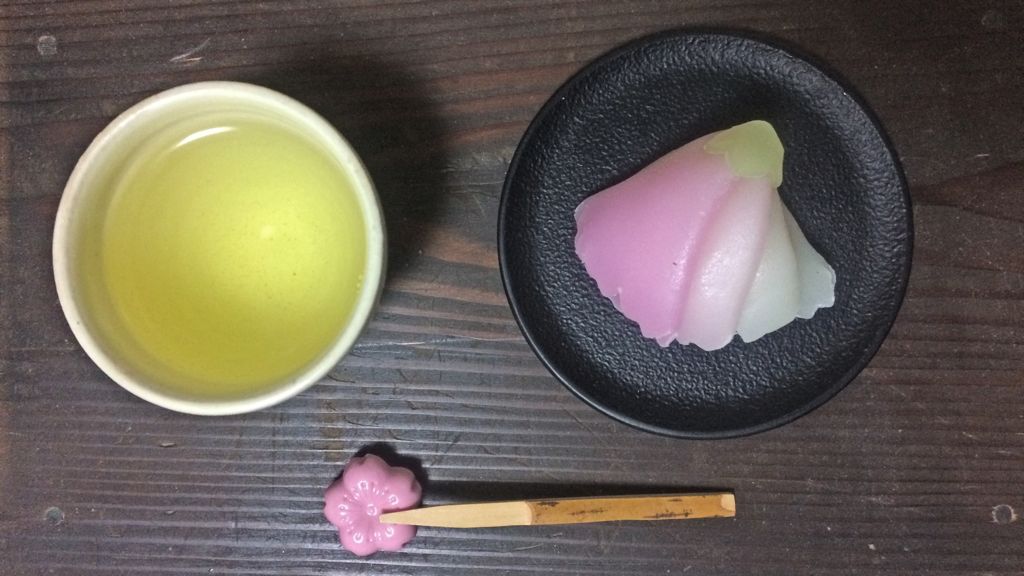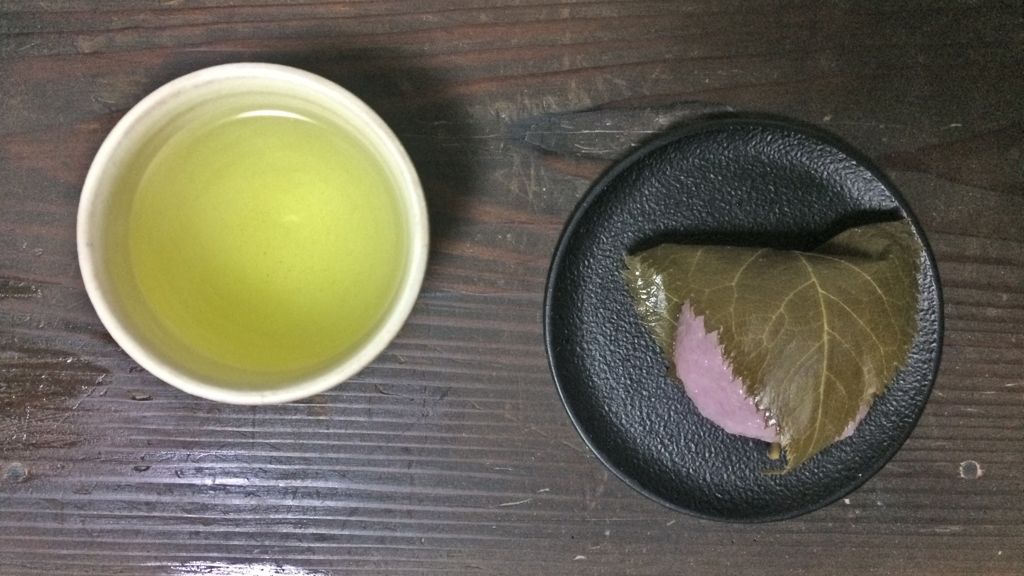April 2018 – Sakura Ryokucha from Shizuoka
We selected a Sakura Ryokucha (桜緑茶) from Kawane (川根), in the prefecture of Shizuoka (静岡).
Sakura Ryokucha
Sakura Ryokucha (桜緑茶) is a green tea with a flavor of Sakura (桜), that is to say of cherry blossom beloved by all Japanese people. It does not contain any artificial ingredient, or even Sakura: the scent comes from the tea variety itself, called "Shizu 7132 (静7132)". It looks like a robot name, however, it is just the name of the tea variety.
Shizu 7132 was born in the 1960s in the prefecture of Shizuoka (静岡). It is hybrid between Yabukita (やぶきた) and a certain non-native variety. The former, Yabukita, represents 80% of all green tea in Japan. The origin of the non-native variety is actually not known. However, it is thought to be from a variety used in the production of jasmine tea or perhaps black tea.
Shizu 7132 contains a fragrant organic compound called coumarin, also found in cherry blossom leaves. We smell Sakura as a result. In the beginning this variety of tea was largely overlooked. Hence its robotic name inherited from the Japanese tea tree management system: part of the number comes from its mother code, Yabukita (7000), and the other part from the name of the prefecture, Shizuoka (静岡).
Sakura Ryokucha has an exquisite and elegant scent and a distinct taste with a golden color. This green tea announces the arrival of spring. We produce very little of it. Accordingly, it is a quite rare in the tea market.
I tasted this tea with 2 kinds of Japanese cakes: a beautiful cake of Kyōto called "weeping cherry blossom (しだれ桜)", and a "rice cake of cherry blossom (桜餅)", very popular everywhere in Japan. This rice cake is made from rice and brined leaves of cherry blossom.

Cherry Blossom, The Starting Point
When cherry trees are in flower, at the beginning of April, everything is renewed. Pupils and students enter or return to school. Adults too: new employees start work and others are transfered. That’s why the cherry blossom season inspires an image of departure to Japanese people with both some kind of joy from a new start, as well as worry from change.
Here’s a ancient poetry famous for cherry blossom written by a Japanese female writer of the 9th century, Onono Komachi (小野小町).「はなのいろは うつりにけりな いたづらに わがみよにふる ながめせしまに」that we can translate as: "Cherry blossom had faded in vain during spring rain, as if my beauty had been lost while I was worried about love and day-to-day life." Cherry blossoms are fragile and fall very easily from wind and rain. She lamented on the impermanence of the life. Lifetime is as fugitive as that of cherry blossom. We have no time to lament, but we have to live now with no regrets, watching cherry trees in bloom.

Brewing Sakura Ryokucha
The amount of tealeaves should be adapted according to the desired taste: it should be around a tablespoon (5 grams) of Sakura Ryokucha for 200ml (7oz) of spring water. The first infusion should last around 30 seconds in water at 80-70ºC (170-190ºF). The second infusion should be done more quickly.
You can wait before drinking until the tea cools down, to allow for the release of Sakura flavor. Alternatively, for making cold tea, put 1 liter of spring water with a sachet of Sakura Ryokucha (10 grams) for about 3 hours.
If you have questions about Japanese teas, please do not hesitate to contact us!
